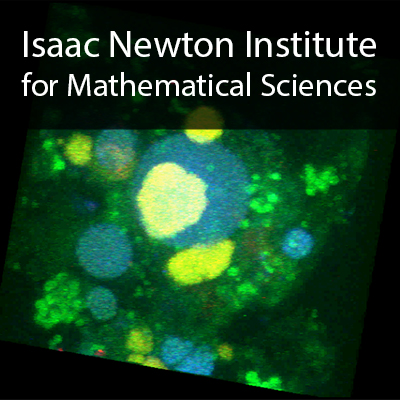Plenary Lecture 12: The paradox of nitrification in acid soils and lessons for microbial community ecology
41 mins 18 secs,
266.68 MB,
WebM
640x360,
29.97 fps,
44100 Hz,
881.62 kbits/sec
Share this media item:
Embed this media item:
Embed this media item:
About this item

| Description: |
Prosser, J (University of Aberdeen)
Thursday 27 November 2014, 15:55-16:30 |
|---|
| Created: | 2014-12-02 12:07 |
|---|---|
| Collection: | Understanding Microbial Communities; Function, Structure and Dynamics |
| Publisher: | Isaac Newton Institute |
| Copyright: | Prosser, J |
| Language: | eng (English) |
| Distribution: |
World
|
| Explicit content: | No |
| Aspect Ratio: | 16:9 |
| Screencast: | No |
| Bumper: | UCS Default |
| Trailer: | UCS Default |
| Abstract: | Co-author: Cecile Gubry-Rangin (University of Aberdeen)
A major, long-standing question in nitrifier ecology has been the paradox of nitrification in acid soils: cultivated ammonia oxidisers cannot growth in liquid batch culture below pH 7 but gross nitrification rate in soil is unaffected by pH and some of the highest rates are seen in soils of pH 4 – 5. This question is of both scientific interest and significant global economic importance, as approximately 30% of the world’s soils are acidic, including 50% of arable soils, and up to 70% of ammonia-based nitrogen fertiliser is lost through nitrification and leaching or denitrification of nitrate. Although several mechanisms were proposed for growth of bacterial ammonia oxidisers in acid soils, a major breakthrough was evidence that the ratio of archaeal:bacterial amoA genes and gene transcripts increase as pH decreases, suggesting that acidophilic archaeal ammonia oxidisers may exist. Further evidence for this hypothesis was a global study of the distribution of archaeal amoA genes, which indicated that pH was a major factor determining archaeal ammonia oxidiser distribution in soil and identifying clusters associated with soils of different pH. The pH preference for these clusters was confirmed by predictions of their distribution in a large number of UK soil covering a range of pH values. The second line of evidence was the isolation of an acidophilic archaeal ammonia oxidisers, Nitrosotalea devanaterra, which belongs to one of the acidophilic clusters characterised in the global study, and demonstration of its growth in acid soil. While discussing this specific question in ammonia oxidiser community ecology, the different approaches used will be discussed and compared and will be used to exemplify the current state of microbial community ecology and ways in which new technologies may help and hinder future studies. |
|---|---|
Available Formats
| Format | Quality | Bitrate | Size | |||
|---|---|---|---|---|---|---|
| MPEG-4 Video | 640x360 | 1.93 Mbits/sec | 599.63 MB | View | Download | |
| WebM * | 640x360 | 881.62 kbits/sec | 266.68 MB | View | Download | |
| iPod Video | 480x270 | 522.36 kbits/sec | 157.95 MB | View | Download | |
| MP3 | 44100 Hz | 249.74 kbits/sec | 75.61 MB | Listen | Download | |
| Auto | (Allows browser to choose a format it supports) | |||||

